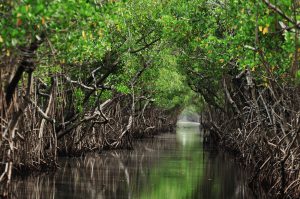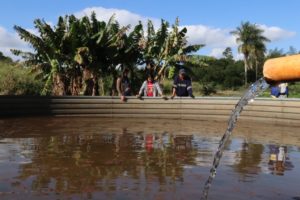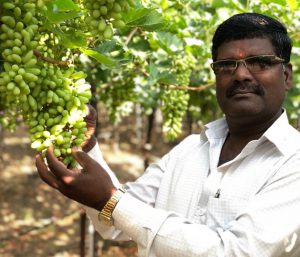Peter Thomson, the United Nations special envoy for the ocean, is a man with a mission: to save the global ocean, the world’s largest ecosystem. It is a daunting task.
In the past three decades, all the indicators of ocean health have turned steadily – and in most cases steeply – downwards. In 1974, for example, as Thomson acknowledges, 90% of global fishing grounds were sustainably fished. By 2013 that had dropped to just over 68%.
At the same time, negative impacts from man-made pollution have risen, compounding the damage to ecosystems. The global ocean has absorbed large amounts of the heat that human activity has produced in the last three decades. As carbon emissions have climbed steeply, the ocean has also absorbed enough CO2 to change its pH balance. This acidification makes life more difficult for shell-forming sea life.
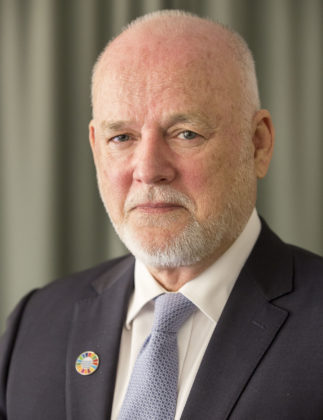
The effects of heat and acidification will be catastrophic for life below water. Coastal ecosystems, where much of marine life originates and lives, are also deeply damaged in many countries by development and pollution. Plastic pollution is now ubiquitous, found even in the deepest part of the ocean.
Peter Thomson has a history of UN engagement. He served as the 71st president of the General Assembly from 2016-17 and previously as Fiji’s permanent representative to the UN. Today, as the UN’s special envoy for the ocean, he naturally stresses the importance of the UN Sustainable Development Goals, in particular SDG 14 (Conserve and sustainably use the oceans, seas and marine resources for sustainable development), which is the foundation of his work.
A global ocean crisis
Much of his job, he explains, is to push for the achievement of SDG 14, an ambition that demands solutions to each of the growing problems of ocean climate impacts, acidification, eutrophication and overfishing, all in the context of low levels of ocean protection.
Global trends are not encouraging. Under SDG 14, the goal is to strengthen coastal ecosystems by 2020 and to reduce debris and nutrient pollution by 2025. But according to the UN’s data, coastal waters continue to deteriorate due to pollution and eutrophication. Characteristically, this is caused by fertiliser run-off which triggers plant growth in the ocean so dense that it starves animal life of oxygen. Sixteen percent of the large marine ecosystems the UN has assessed are in the high or highest categories for coastal eutrophication, including most of China’s coastal waters.
On overfishing, the picture is equally daunting. The ambition is to end illegal, unregulated and unreported fishing by 2020, eliminate harmful fishing subsidies and effectively regulate harvesting with science-based management plans. Currently, Thomson points out, marine protected areas cover only 13.2% of the marine environment under national jurisdiction (up to 200 nautical miles from shore). Beyond that, only 0.25% of the marine environment is protected, making a total of just 5.3% of the total global ocean area. Fishing subsidies, in particular the subsidies for fuel that make it possible for China’s distant water fleet to operate in the global ocean, remain in place.
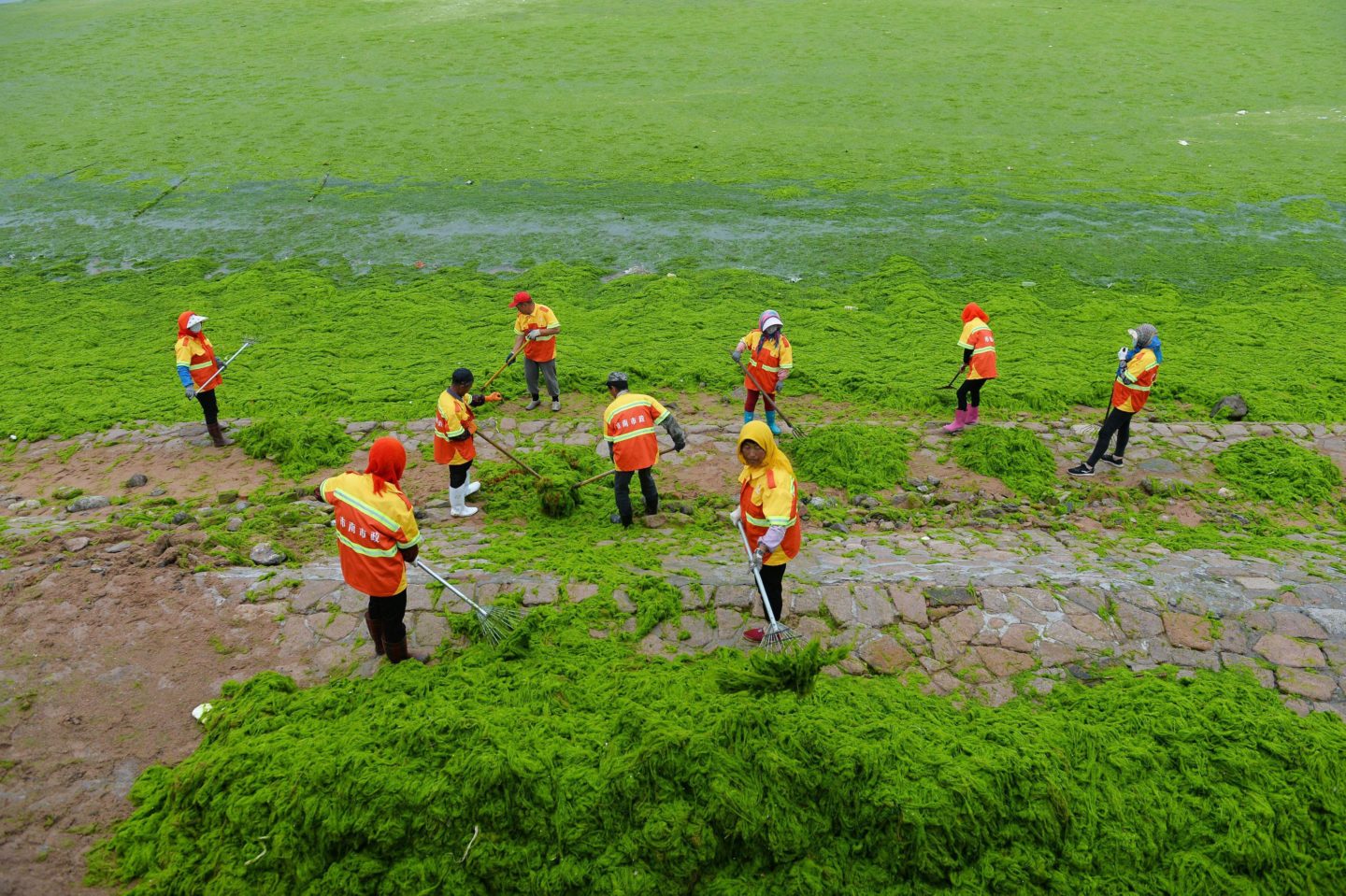
Sustainability is possible
He acknowledges that much remains to be done, but insists that the effort must continue, and that the framework of the Sustainable Development Goals is essential. “I believe that climate change and ocean change, and climate action and ocean action are the high callings of the 21st century,” he told chinadialogue ocean. “It’s what life exists in on this planet. And it is all in peril.”
“What is the point of the SDGs? There are two ways humanity will revive on this planet in an equitable way, and it goes back to the two agreements that were made in 2015. One being the Paris Agreement and the other the SDGs. They were not arrived at easily, or devised by bureaucrats or politicians, or business interests. This was not the usual suspects. Every nation and the UN’s 194 countries were negotiating for years to reach consensus in Paris and New York. If you put the two together, we have a recipe for humanity’s survival on planet earth.”
“They have to be implemented with integrity,” he continued, “or we can’t say we have certainty. I am confident, and I am a grandfather, that with those two agreements faithfully implemented, we can have that confidence.”
But how, exactly, does the existence of the SDGs effect change?
“The SDGs are made up of targets,” Thomson explains. “SDG 14 has 10 targets and basically they galvanise the international community to meet those targets. We hold ourselves to account – they are like exams at the end of the school year.”
“In the case of SDG 14, four of the 10 targets mature in 2020. Honestly, we are in a sprint here. They are all achievable but the most difficult is 14.4 – ending IUU fishing and overfishing. That’s a really hard task. Another is that 10% of the ocean should be marine protected areas by 2020. We have reached 7.4% so I am reasonably confident on that. On the better management of coasts and ecosystems, lots of work is being done. The fourth is ending harmful subsidies: the WTO [World Trade Organisation] has the responsibility of removing those and we are working on that now – fuel, shipbuilding subsidies and overcapacity. They set us targets and we have to hold ourselves to it.”
To try to ensure the four 2020 targets are met, the UN is working to hold an ocean conference next year, to force a review of progress.
Big challenges ahead
“Are we on track, and if not what are we going to do about it?” he says. “These are not paper targets and they were not arrived at idly. They are achievable and if we don’t do them we are really in jeopardy. We do not have sustainability.”
IUU and overfishing remains, he says, the biggest challenge.
“I was shocked,” he says, “to see that 33% of populations are being overfished. If we carry on with present practices, they will be extinct. Ending that 33% overfishing in a short period of time is a huge ask of the fishing community. We have to convince them that there is no point in killing the goose that lays the golden egg.
“But to say we will end IUU fishing is like saying we will end crime. There will always be some guy sneaking out the back and doing the wrong thing. We have three billion dollars of illegal fish hitting the tables around the world. Consumers and the supply chains can’t just say no to that.”
Thomson says there are some very effective governance measures, including the Food and Agriculture Organisation’s 10-year-old Port State Measures Agreement (PSMA), designed to ensure illegally caught fish never enters the market through ports. “If we can get everybody signed up to [PSMA] by 2020, I shall regard that as a great success. It is the best weapon we have against IUU fishing, but the majority of governments have yet to sign. Much of my work is getting governments to understand the legal requirements and to get them across the line by 2020.”
In addition to trying to persuade large powers like China to sign up, Thomson recognises that small states which might be enthusiastic require a different kind of support.
“I am trying to encourage philanthropy and NGOs to get alongside small countries who want to sign and would need inspectors on the wharf who have to be funded. For a small island state, funding a couple of new posts is a big deal. So I am saying why not partnership? Funding and training local people to take on the role. It can bear fruit quickly over the following years. PSMA is a critical part of ending IUU.”
Thomson says that traceability is the other key element in tackling IUU. “That is the fourth industrial revolution. We should be able to trace the provenance of all fish. It should be achievable in the short term that when you go to the market to buy a fish, you don’t end up buying stolen goods.”
For the moment, Thomson is gearing up for next year’s launch of the UN Decade of Ocean Science, which aims to bolster scientific research and tech innovation to support countries in the sustainable development of the ocean.
The knowledge we will harness from this initiative is vital, Thomson says. “Less than 5% of the ocean is known now. By 2030 we want to know it all so we can make the right decisions for the ocean.”



